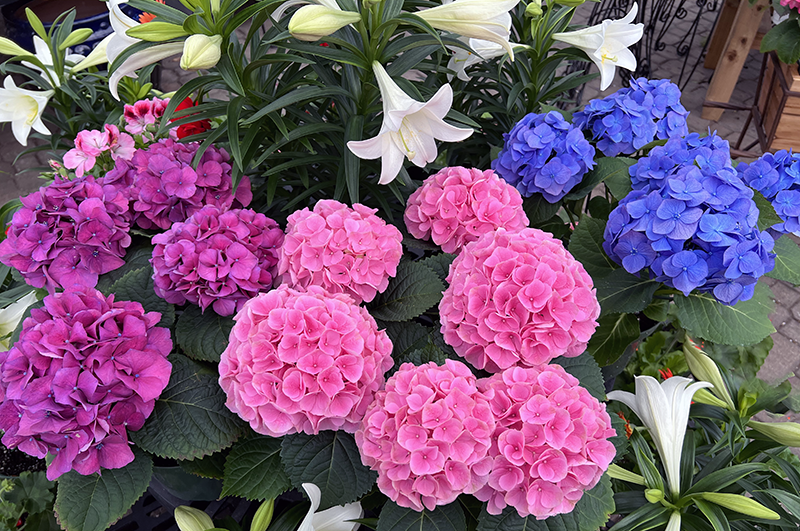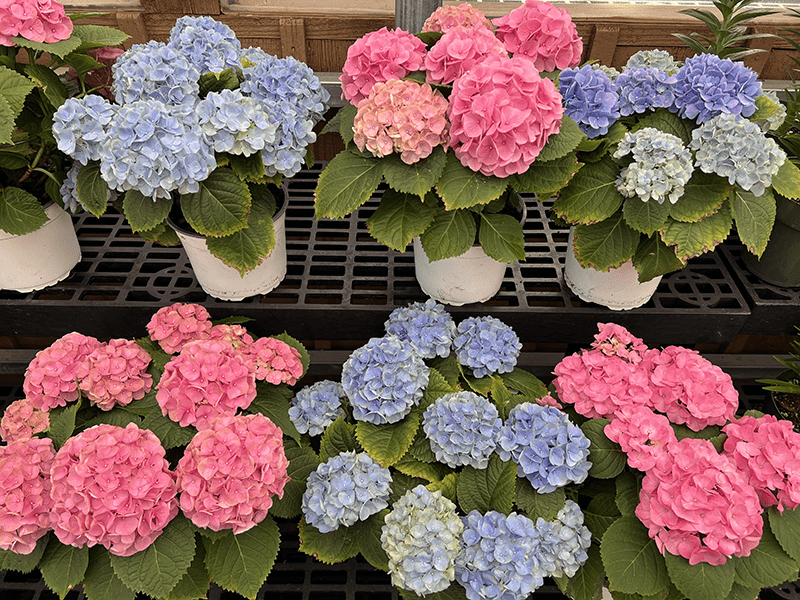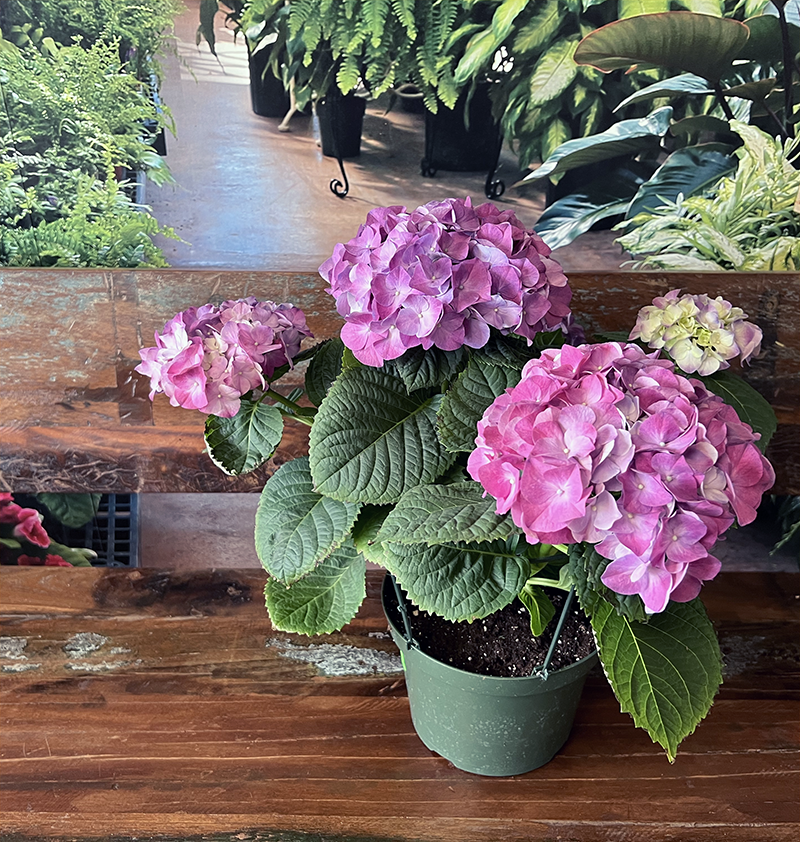Keeping and Planting Gift Hydrangeas
Keeping and Planting Gift Hydrangeas
At this time of year our greenhouse and patio are filled with greenhouse grown hydrangeas. They are so colorful and flower-filled that we all want to take one home just to have that hydrangea happiness in our houses in the spring! Our customers always want to know if they can plant these outside, and have them grow as shrubs in the landscape. Here are some tips for keeping and planting the Easter or Mother’s Day Hydrangeas.

- These gift Hydrangeas are almost all Hydrangea macrophylla, also known as mophead hydrangeas. Most of them aren’t labeled, so it’s impossible to tell which variety they are, yet on Cape Cod they should be hardy and bloom in the landscape. If you live in a Zone 5 or colder, plant these in larger pots and bring them into a cool but not freezing garage for the winter. In colder areas these will live but they won’t flower, since winter temperatures in the single digits or below zero will zap the flower buds that the shrub forms the previous summer.
2. You can’t plant these outside until the night temperatures are reliably above 50 degrees. But if you keep them in the house until then (mid to late May on Cape Cod) they are prone to drying up quickly. The best approach is to get a pot that’s at least one inch larger on all sides and the bottom, and replant your hydrangea in that container with some fresh potting soil on all sides. Make sure that pot has a drainage hole, and don’t put rocks or other debris in the bottom…just potting mix.
3. Place the repotted hydrangea on a saucer so that when you water it you can water well without flooding your floor. Keep the plant in a bright window, turning it around occasionally so that it doesn’t start to lean toward the light.

4. Once the night time temperatures are above 50° put these plants outside in a shady location for four or five days so that they get used to “the real world.” Then you can plant them in their permanent home.
5. Since you don’t know (in most cases) which variety of hydrangea these gift plants are, you won’t know how large they might grow. So choose a spot where it won’t matter if the plant grows two feet tall or five feet tall. Locations where there is morning sun and afternoon shade will ensure that the flowers last the longest; although these shrubs tolerate full sun, their flowers brown out quickly in those conditions.
6. Your gift hydrangea’s flowers will brown at some point in the late-spring or early summer. Clip those finished flowers off right below the flower, but don’t cut the stems of the shrub down at any point. The plant will not flower again this summer, but if the winter is favorable, and the stems aren’t cut down in fall or spring, your hydrangea should flower next summer.

7. Water your newly planted hydrangea deeply once a week, making sure that the area all around the plant is watered, not just at the base of the stems. Mulch around the plant to help hold moisture in the soil and to keep down weeds. Next year, fertilize with Holly-tone or Flower-tone in the spring.
2 Comments
Leave a Comment
Subscribe To Our Newsletter
Sign up for our weekly email about sales and events.

Its May 12 and my 7 yrs old pinky winky hydrangea has not leafed out after winter. How do i check if its dead?
Wait until the end of May. If you see no green growth by the end of the month, it might have died in the winter.